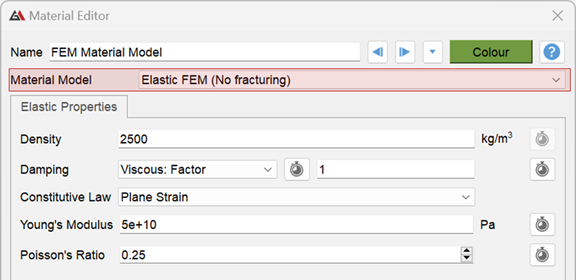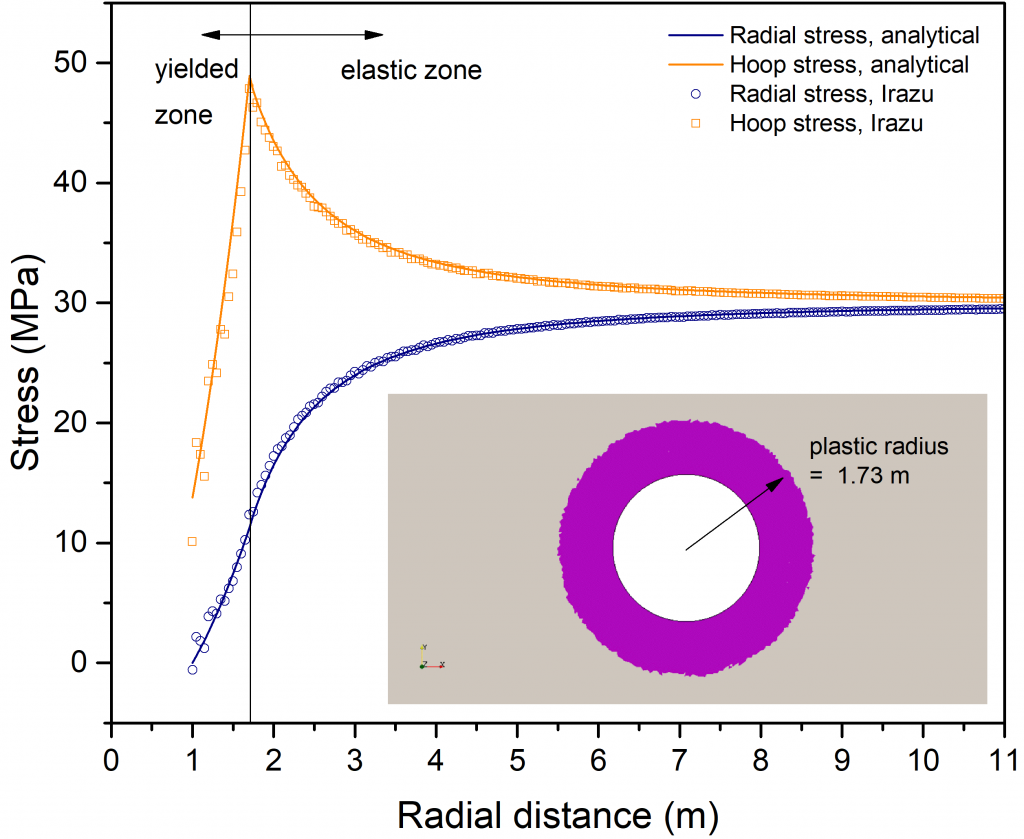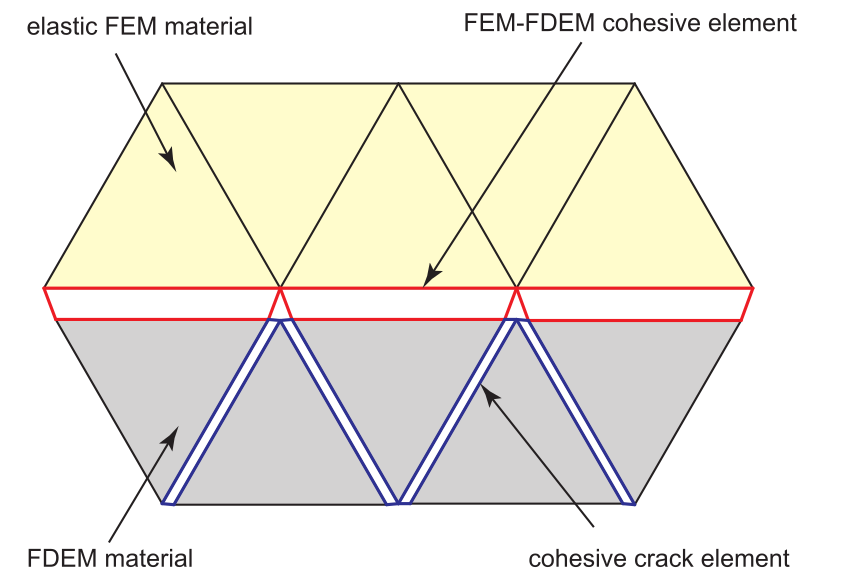In Irazu version 6.1, a new elastic FEM material model has been added to grant the ability to explicitly define unfracturable domains within an FDEM model. Ultimately, this leads to significantly reduced simulation run times without compromising the accuracy of the result. In addition, we would like to provide a sneak peek of new elasto-plastic material models that will be available in the next major release of Irazu.
Elastic FEM material model
When tackling typical rock mechanics problems, the entire domain will likely not experience large deformations and fracturing. As such, running the entire model with FDEM materials may not always be the most robust solution. Therefore, a new set of FEM-only material models have been added to Irazu that do not permit the material to fracture, but will still calculate the elastic reaction forces. When combined with typical FDEM materials that do fracture, computation times can be significantly decreased (by up to 5 times in preliminary testing) by reducing the number of degrees of freedom and the total number of operations in areas of the model where damage is not expected to occur. For these types of models, the FEM-FDEM interface is captured by performing regular contact interaction calculations and employing a dedicated cohesive element whereby nodes on the FEM side are shared between adjacent finite elements.
The elastic FEM material model is currently only available for mechanical simulations in Irazu 2D and 3D. To use this feature, it is as simple as creating a new material under the Materials tab, changing the Material Model to Elastic FEM (No fracturing), and defining the elastic parameters of the material. This material set can then be assigned to the elements in the model.

Sneak peek: elasto-plastic material formulations
The Geomechanica team is hard at work wrapping up the development of new elasto-plastic finite element formulations. In particular, three popular elasto-plastic material models are being implemented in the next major release of Irazu 2D and 3D, including:
- perfect-plastic Drucker-Prager
- perfect-plastic Mohr Coulomb
- brittle-plastic Mohr Coulomb
There are many advantages to using elasto-plastic material models to capture irreversible deformations and damage using continuum-based plasticity theory in Irazu. The applicability of Irazu can be extended beyond quasi-brittle materials to new materials, including soils, concrete, and soft rocks. In addition, fracture simulations can be improved by capturing intra-element damage using an elasto-plastic material model.

We look forward to releasing this new development and cannot wait to see how it will be utilized by our users. To learn more about this, please get in touch with us to request a beta version or tell us which material models you’d like to see implemented in Irazu.
